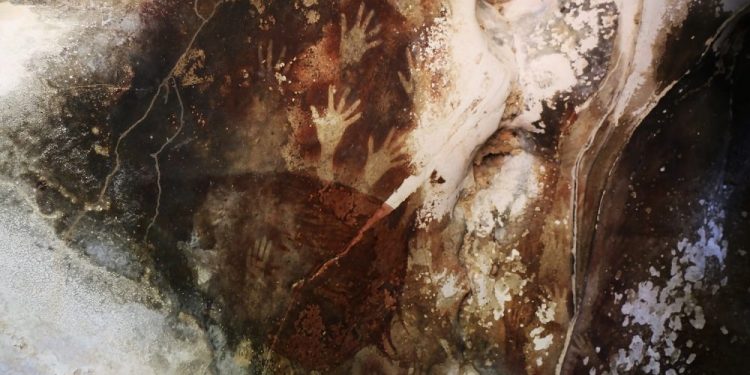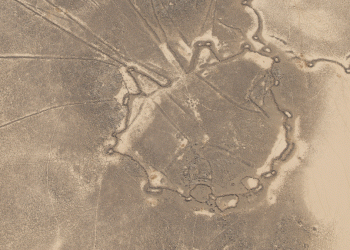Numerous archeological and palaeontological studies have revealed that many caves in Europe are home to curious, incredible, and ample examples of cave paintings dating back tens of thousands of years. Until recently, experts in the field were convinced that Europe was home to the earliest known cave paintings. But we were wrong. Recently found cave paintings depicting animals and other motifs in Indonesia change how we look at history.
Archeologists have identified a set of cave paintings on the Island of Borneo, and experts say that the ancient art was made more than 40,000 years ago, making the cave paintings much older than examples found in France or Spain. Until this discovery was made, scientists held Europe as a starting point for how, when, and where ancient humans began making art.
An unidentified animal
“The oldest cave art image we dated is a large painting of an unidentified animal, probably a species of wild cattle still found in the jungles of Borneo,” revealed study lead author Maxime Aubert, an archaeologist and geochemist at Griffith University in Australia. But more than just representations of life, animals, and food, experts say that the cave paintings in Borneo convey a special message. “It is now the earliest known figurative artwork,” according to USA Today.
Rewriting the History of Art
The cave paintings identified by experts in Borneo are believed to be as much as four thousand years older than the oldest cave paintings discovered in Sulawesi. Interestingly, the cave paintings discovered in Sulawesi in the 1950s were initially dismissed as being 10,000 years old. Scientists have argued that cave art could not survive that long in tropical climates.
“We think it wasn’t just food for them – it meant something special,” Mr. Aubert said. “Whether this is a coincidence, the result of cultural convergence in widely separated regions, large-scale migrations of a distinct Eurasian population, or another cause remains unknown,” the researchers revealed. As for who the artists that created the cave paintings were, experts still can’t tell. “…who the ice age artists of Borneo were and what happened to them is a mystery,” explained co-author of the study, Pindi Setiawan.
The cave paintings from Borneo have been known since the 1990s. The cave paintings inside Lubang Jeriji Saléh date back 52,000 years and depict an unknown animal. The earliest known European figurative cave paintings are those of Chauvet Cave in France. According to radiocarbon dating, these paintings date to earlier than 30,000 BCE (Upper Paleolithic).
Have something to add? Visit Curiosmos on Facebook. Join the discussion in our mobile Telegram group.











